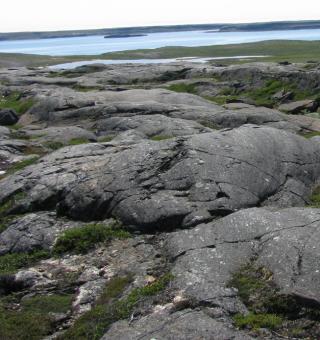The ancient rocks were discovered in Quebec and their age is estimated at 4.28 billion years, 250 million years older than other rocks discovered in the past - also in Canada

Using radiometric dating of rocks in the northern regions of Quebec Canada, researchers determined that the age of the rocks is 4280 million years. These are the oldest rocks that have been dated so far on Earth. The study was published in the scientific journal Science and was carried out by researchers from McGill University in Montreal, the Carnegie Institution for Science in Washington and the Université de Quebec in Montreal.
The use of geochemical methods to determine the age of the rock revealed to the researchers that the age of the rock in Quebec is 4.28 billion years, meaning that the 250 million year old rock is older than other rocks tested on Earth. The previous record belongs to a 4.03 billion year old rock from the Northwest Territories of Canada known as Acasta Gneiss. Apart from these rocks, the only thing defined as older is the mineral zircon found in Western Australia.
The Earth is 4.6 billion years old, remnants of the ancient crust are extremely rare - most of them have been eroded, recycled through natural processes and moved into the Earth's interior by the tectonic plates.
The importance of the rocks stems not only from their great age but also because of their unique chemical composition that is only found in very old rocks, "This gives us an unprecedented glimpse into the processes that created the primary crust," says Richard Carlston from the Carnegie Institution.
The researchers estimated the age of the rock using the technique of isotope dating in rocks, which is based on measuring the radioactive decay rate of natural isotopes and this with the help of the analysis of the isotope neodymium-142 which is a by-product of the isotope samarium-146. This technique can only be used on rocks that are 4.1 billion years old or older, and this is the first time that this method has been used to date rocks on Earth since no such ancient rocks have ever been found.
"Not only does our method open a door to the secrets related to the beginning of the Earth," said Jonathan O'Neill of McGill University, "geologists now have a new playground in which to study how and when the Earth was formed, what the atmosphere looked like then and when the first continents were formed."
Sources

5 תגובות
Lalon
Personal Knowledge
The age of a rock is the age from the day the rock solidified. And how is it measured? For example, take the uranium element in the rock, this element is radioactive and decays into lead. As long as the rock was in a liquid state the lead obtained from the uranium discharge evaporated due to the relatively low vaporization temperature of lead. At the moment of solidification, the lead remains in the rock. According to the test of the ratio between the lead and the uranium, we know when the solidification happened. In Canada it happened 4280 million years ago. This is usually checked with the help of several elements that break down so that the test has a relatively low measurement error.
I hope I wasn't wrong.
Sabdarmish Yehuda
Can someone explain what the age of a rock actually is? What was it before it was rock, magma? Is it actually the date of its solidification? And what is the age of zircon?
This means that the entire region as a whole has not changed much in all those 4,280,000,000 years.
boring in canada
I am sure that matters are not as simple as it appears from the article.
Hmmm…
Greetings friends,
Ami Bachar